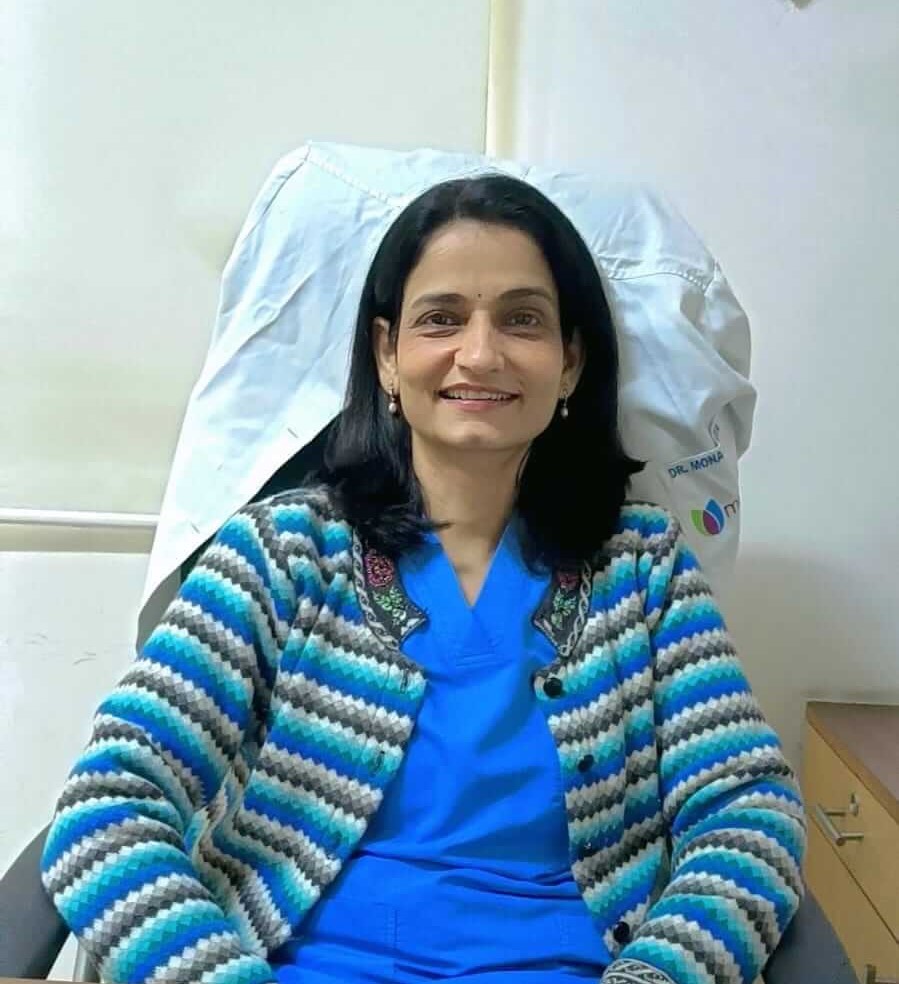Introduction:
When it comes to family planning and fertility treatments, there are several advanced techniques available that can provide invaluable insights and assistance. Preimplantation Genetic Diagnosis, commonly known as PGD, is one such technique that has revolutionized the field of reproductive medicine. PGD is a powerful tool that allows couples to screen embryos for genetic disorders before they are implanted in the mother’s womb.
What Is PGD Test?
PGD stands for Preimplantation Genetic Diagnosis. Imagine it as a genetic health check for embryos. In this procedure, during an in vitro fertilization (IVF) cycle, a small number of cells are biopsied from the developing embryos. These cells are then meticulously analyzed for genetic abnormalities, mutations, or chromosomal disorders. The objective is to identify embryos that are free from these issues, increasing the chances of a successful pregnancy and the birth of a healthy baby.
When Is the PGD Test Done?
PGD is typically recommended for couples who have a known history of genetic disorders within their families. If you or your partner carry a genetic mutation that could potentially be passed on to your child, PGD can serve as a lifeline. Additionally, couples who have experienced recurrent miscarriages or multiple failed IVF attempts might opt for PGD to increase their chances of a successful pregnancy.
What Is PGS/PGT-A Test?
PGS, or PGT-A, involves meticulous analysis of the chromosomes within the embryo. Chromosomal abnormalities can lead to failed pregnancies or genetic disorders like Down syndrome. By conducting PGS/PGT-A, your medical team can identify embryos with the correct number of chromosomes, increasing the likelihood of a successful pregnancy.
When Is PGS/PGT-A Test Done?
PGS/PGT-A is often recommended for couples who are of advanced maternal age or have a history of recurrent pregnancy loss. As a woman ages, the risk of chromosomal abnormalities in embryos increases, making PGS/PGT-A an invaluable tool to improve the odds of a healthy pregnancy. Moreover, if you’ve experienced multiple miscarriages, this test can provide insights into whether chromosomal issues are contributing to your pregnancy challenges.
What Is the Difference Between PGD & PGS/PGT-A?
Both PGD and PGS/PGT-A are advanced techniques that offer valuable insights into the genetic health of embryos, but they serve different purposes. Let’s break down the key differences between these two approaches.
- The Focus of PGD: PGD primarily targets specific genetic disorders that are known to run in families. It’s like a genetic detective, searching for particular mutations that could potentially affect your future child’s health. PGD is a personalized tool, honing in on the unique genetic makeup of your family.
- The Role of PGS/PGT-A: On the other hand, PGS/PGT-A has a broader scope. It examines the overall chromosomal health of embryos, ensuring that they have the correct number of chromosomes. This is particularly helpful for couples who want to reduce the risk of miscarriages or increase the chances of a successful IVF cycle.
Read to Know: What is Preimplantation Genetic Testing & Diagnosis?
How is PGD Test Done?
PGD, or Preimplantation Genetic Diagnosis, is a beacon of hope for couples carrying genetic disorders. Picture this: just as a master sculptor chisels away imperfections to reveal a masterpiece, PGD examines embryos at the cellular level. It’s a meticulous process, involving:
- Embryo Biopsy: Embryos created through IVF are cultured and allowed to develop for a few days. A skilled embryologist delicately removes a few cells from each embryo, akin to taking a tiny sample for a grand analysis.
- Genetic Analysis: These tiny cells hold the blueprint of life, the DNA. With cutting-edge technology, scientists scrutinize the DNA, detecting any genetic mutations or abnormalities that could potentially lead to inherited diseases.
- Selection of Healthy Embryos: Once the genetic analysis is complete, a decision is made. Only the healthiest embryos, free from the shadow of genetic disorders, are selected for implantation. It’s like curating a gallery, handpicking the most exquisite pieces of art.
How is PGS Test Done?
PGS, or Preimplantation Genetic Screening, ventures into the territory of chromosomes. Imagine a symphony orchestra, each chromosome playing a unique note. PGS ensures all the notes are harmonious, enhancing the chances of a successful pregnancy.
- Embryo Biopsy: Similar to PGD, embryos are biopsied. This time, the focus is on chromosome numbers and structures rather than specific genetic mutations.
- Chromosome Analysis: The extracted cells undergo meticulous analysis. Are there too many notes (chromosomes) or too few? Are they in tune? This screening helps identify aneuploidies, which can lead to miscarriages or birth defects.
- Selecting the Cream of the Crop: PGS enables scientists to select embryos with the right number of chromosomes – the cream of the crop. It’s like assembling a flawless orchestra, each instrument playing in perfect harmony.
What is the Cost of PGD in Delhi for IVF?
In Delhi, PGD testing for IVF costs anywhere from ₹30,000 to ₹1,00,000 or more per cycle for PGD testing. Several factors influence the cost, including the chosen fertility clinic, the complexity of genetic testing required, and any additional services provided alongside PGD testing. To gain a precise understanding of the total expenditure, it’s essential to engage in an open conversation with your selected fertility clinic.
What are PGS/PGT-A Testing Costs in Delhi for IVF
In Delhi, the cost of PGS/PGT-A testing for IVF range from approximately ₹20,000 to ₹80,000 or more per cycle. Variations in cost arise from factors such as the reputation of the fertility clinic, the expertise of geneticists involved, and any supplementary services bundled with the testing. It’s important to note that while these costs may seem substantial, the insights provided by PGS/PGT-A testing can significantly contribute to the overall success of your IVF journey.
Factors That Affect Test Costs:
- Clinic Reputation and Expertise: The selection of an appropriate fertility clinic can make a significant difference in your IVF experience. Clinics with established experts in genetics and reproductive medicine may charge a premium for their services. Their track record and proficiency can instill confidence in couples, making the financial investment a worthwhile consideration.
- Genetic Testing Complexity: The complexity of the required genetic testing for PGD and PGS/PGT-A can impact the overall cost. Certain genetic conditions may necessitate more intricate testing procedures, leading to higher costs. Conversely, if you’re seeking relatively straightforward genetic screening, you might find more cost-effective options.
- Additional Services and Packages: Fertility clinics often offer comprehensive packages that encompass a range of services alongside PGD and PGS/PGT-A testing. These packages may include consultation fees, embryo freezing, and even multiple IVF cycles. While these packages might appear initially more expensive, they could provide enhanced value in the long run, especially if multiple IVF attempts are needed.
Conclusion
PGS & PGD testing is a valuable tool in the realm of IVF, offering the potential to improve pregnancy success rates and reduce the risk of genetic disorders. While it involves considerations of cost, potential risks, and emotional impact, many couples find that the benefits of these tests outweigh these factors, especially when facing fertility challenges or a history of genetic conditions. As with any medical decision, it’s essential to consult with your healthcare provider to determine if PGS or PGD testing is the right choice for your individual fertility journey.
F.A.Q
Q: Is PGS testing necessary for IVF?
A: PGS testing, or Preimplantation Genetic Screening, is not an absolute requirement for IVF. However, it can provide valuable insights into the genetic health of embryos, helping to identify chromosomal abnormalities and increasing the likelihood of a successful pregnancy.
Q: Does PGS improve IVF success?
A: Yes, PGS testing can contribute to improved IVF success rates. By selecting embryos with the correct number of chromosomes, the chances of a healthy pregnancy are enhanced, reducing the risk of miscarriage and increasing the odds of successful implantation.
Q: Is PGS worth the money?
A: The value of PGS testing depends on individual circumstances. Couples with a history of genetic disorders or advanced maternal age may find PGS particularly beneficial. It provides peace of mind by increasing the chances of a healthy pregnancy, which can make the investment worthwhile.
Q: How successful is IVF with PGS testing?
A: IVF success rates with PGS testing vary based on several factors, including the age of the mother, the quality of embryos, and underlying fertility issues. Generally, PGS can significantly improve success rates by aiding in the selection of genetically healthy embryos.
Q: What is the success rate of PGS?
A: The success rate of PGS depends on multiple variables. When used to identify and transfer chromosomally normal embryos, PGS has been shown to increase the chances of successful pregnancy and reduce the risk of miscarriage, especially in cases of advanced maternal age or recurrent pregnancy loss.
Q: What are the disadvantages of PGS testing?
A: While PGS offers many benefits, there are some disadvantages to consider. PGS doesn’t guarantee a pregnancy, and false-positive or false-negative results are possible. The testing process can also extend the time needed for embryo implantation.
Q: What are the risks of PGS IVF?
A: The risks of PGS IVF are relatively low. The biopsy procedure, where cells are taken from the embryo for testing, carries a minor risk of damage to the embryo. However, advancements in techniques have minimized this risk. Additionally, the emotional aspect of dealing with PGS results should be considered.
Q: What is the success rate of 2 embryo transfer?
A: The success rate of transferring two embryos during IVF can vary based on factors such as the age of the woman, embryo quality, and underlying fertility issues. Generally, transferring two embryos may increase the chances of pregnancy, particularly for older women or those with a history of unsuccessful IVF attempts.
Q: What makes IVF most successful?
A: Several factors contribute to the success of IVF. These include the age of the woman, the quality of embryos, a healthy uterus, and addressing any underlying fertility issues. Close collaboration with fertility experts, maintaining a healthy lifestyle, and adhering to medical recommendations can optimize IVF success.
Q: How can I maximize my IVF success?
A: To maximize IVF success, consider a holistic approach. Prioritize a healthy lifestyle with a balanced diet, regular exercise, stress management, and adequate sleep. Follow your fertility specialist’s instructions diligently, attend all appointments, and maintain a positive outlook throughout the process.
Q: How many embryos are needed for PGS?
A: The number of embryos needed for Preimplantation Genetic Screening (PGS) can vary. Usually, a small number of cells are biopsied from each embryo for testing. In some cases, a minimum of 5-6 cells is recommended to ensure accurate results. Your fertility clinic will guide you on the appropriate number based on your situation.
Q: Can PGS damage embryos?
A: The risk of PGS damaging embryos is minimal. The biopsy procedure, which involves removing a few cells from the embryo for testing, has become highly refined. Advances in techniques have reduced the chances of harm to the embryo. The benefits of accurate genetic information often outweigh the minor risks associated with the biopsy.
Q: Is one embryo enough for IVF?
A: In many cases, transferring a single embryo during IVF, known as elective single embryo transfer (eSET), can be sufficient. Advances in embryo selection and improved success rates of eSET have made it a viable option, particularly for younger women with good embryo quality.
Q: Can I walk after embryo transfer?
A: Yes, you can typically walk after embryo transfer. Bed rest is no longer a strict requirement, and most clinics advise light activities and rest for the remainder of the day. However, it’s essential to follow your fertility specialist’s recommendations, which may include avoiding strenuous activities for a brief period.


